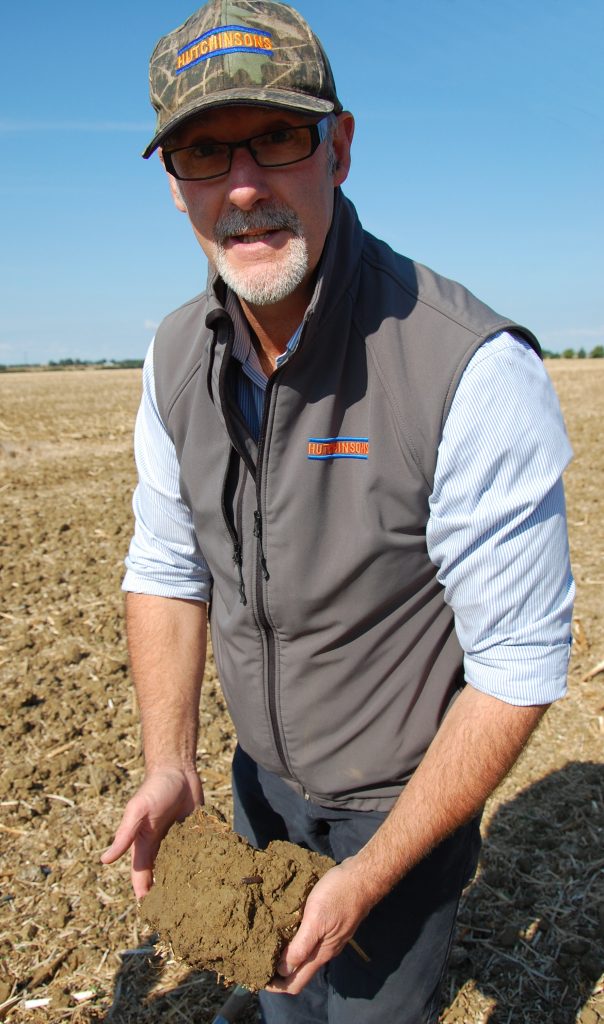Resist early drilling temptation where black-grass threatens
9th September 2016
Growers must hold-off drilling winter wheat on land affected by black-grass for at least another month or risk fire-fighting this pernicious weed for the rest of the season. That is
Growers must hold-off drilling winter wheat on land affected by black-grass for at least another month or risk fire-fighting this pernicious weed for the rest of the season.
That is the warning from Hutchinsons technical manager Dick Neale who says many growers still fail to recognise the importance of delayed drilling in controlling black-grass.
All too often the temptation is to push ahead with autumn cultivations and drilling whenever conditions allow for fear of the weather changing and getting “caught out” later.

Dick Neale.
But high dormancy this autumn (see panel below) combined with dry soils in many southern and eastern areas means very little black-grass has yet emerged and drilling too early risks high levels of emergence within the crop, which will be harder to control and potentially exacerbate problems.
“Don’t be fooled. Although some growers who created stale seedbeds early, to the right specification and in moisture, have seen a good black-grass chit, the bulk of the population will not emerge until late September with a second major flush in the first week of October. If black-grass is a threat you can’t afford to drill before the 15th of October.
“Most soil will take two to three inches of rain with no problem and bring land back to the conditions required for a good seedbed creation and emergence. The best advice is to leave ground well alone and wait for black-grass to emerge. We’re only talking about delaying drilling on fields affected by black-grass, so you can still drill earlier elsewhere.”
Mr Neale warns this autumn is very different to last year, when seed return from the previous year was lower and soil conditions favoured good pre-emergence herbicide efficacy. “But the weather this spring resulted in bad tiller control in a lot of places leading to high seed return, so the starting population for many growers has already been ramped up several times over.”
For those debating whether to apply a pre-emergence herbicide where seedbed conditions remain very dry, Mr Neale points to trials that show the efficacy of residual chemistry is reduced in dry years and he reiterates the need to wait for soil conditions to improve before drilling.
“If you’re drilling into dry seedbeds during September, when most black-grass emerges, then you’ve already gone wrong.”
He also advises avoiding winter cropping on the worst “red” black-grass fields, which should go into spring cropping to allow more time to reduce weed population pressure outside the crop and also introduce alternative forms of chemistry to help manage resistant populations.
Key tips:
- Avoid drilling before mid-October where black-grass is present
- Leave ground alone while black-grass germinates
- Avoid deep cultivations (e.g. subsoiling) which can bring fresh seed to surface and disturb natural soil structuring
- Spray-off seedbeds with glyphosate prior to drilling – follow the WRAG guidelines (http://cereals.ahdb.org.uk/media/1101603/WRAG_Glyphosate_resistance_guidelines_June_2015.pdf)
- Consider spraying-off flushes earlier if weed emergence justifies it (i.e. more than 200-300 plants/m2 emerge)
- Minimise cultivation depth before and during drilling – black-grass germinates mainly from top 50mm
- Use a pre-emergence herbicide e.g. products based on robust co-formulations of flufenacet with either picolinafen/ PDM/ DFF, tailored to suit the weed-spectrum
- Follow-up with a robust post-em application based on a range of active ingredients
- Put worst black-grass fields into spring cropping.
Treat dormancy figures with caution
Black-grass dormancy this autumn is the highest since 2012 due to cooler than normal conditions during the key seed-set period in June, according to ADAS.
Analysis of 30 samples shows an average germination of just 22%, which is well below the last three years (33-35%) and only slightly higher than 2012 (20%).
However, ADAS warns that dormancy only applies to freshly shed seed and the effect may be “minimal” depending on the amount of seed already in the seedbank. “The key factor affecting germination this year will be moisture availability.”
Mr Neale also points out that dormancy tests can be influenced by the type of crop black-grass has grown in, so results should always be treated with caution and management decisions made on an individual field-by-field basis.
For example, black-grass that has grown under a large, early-sown oilseed rape canopy may have matured earlier under dull, damper conditions than black-grass in a spring-sown barley crop, which is likely to have emerged and set seed later, with heads above the canopy in full sun. In such cases, black-grass seed collected from the oilseed rape crop may exhibit higher dormancy than that from the barley.
